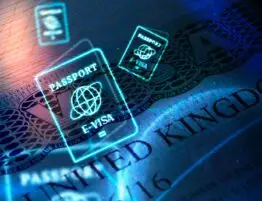
The UK government’s efforts to modernise its immigration system by transitioning to a fully digital eVisa platform have faced significant hurdles. Originally envisioned as a streamlined, secure, and efficient process, the implementation of this system has been marred by technical issues and repeated delays. Compounding these challenges is the complexity of the UK’s immigration laws, which have become increasingly convoluted in recent years.
A Delayed Digital Revolution
The eVisa system was introduced to replace physical immigration documents with a digital portal where individuals could securely and conveniently prove their immigration status. This move is part of a broader effort to embrace digital transformation and improve the user experience. However, the technical execution of the eVisa portal has fallen far short of expectations.
Many users report frequent errors, inaccessible interfaces, and a lack of user-friendly design. The system is so plagued with issues that even those responsible for its management often find themselves unable to resolve them. These technological shortcomings are not limited to the eVisa platform but extend to other portals used in the UK immigration system.
The government’s reliance on third-party contractors for these systems has drawn criticism, as the software created often fails to meet the demands of both applicants and immigration officials. These persistent technical issues have led to repeated delays, with physical immigration documents now granted temporary extensions to remain valid while the digital transition struggles to gain traction.
Legislative Overload: A System Under Strain
Technical problems are only part of the story. The UK’s immigration laws have become increasingly complex since the introduction of the points-based system. In the years since its implementation, hundreds of amendments, new regulations, and changes have been introduced. This constant evolution has made it difficult for applicants, legal advisors, and even immigration officials to stay up to date.
The pace of legislative changes is so rapid that misapplications of the law are not uncommon. Visa officers sometimes apply outdated regulations, and even judges presiding over immigration tribunals have been observed struggling to identify which law is current. The uncertainty this creates can be distressing for applicants and undermines confidence in the system’s consistency.
The Intersection of Technology and Law
The challenges in the UK’s immigration system arise from the intersection of two problematic areas: outdated technological infrastructure and an ever-changing legal framework. While the eVisa platform’s aim of providing a seamless digital experience is laudable, its current execution undermines that goal. Similarly, while the government’s intent to modernise immigration laws is clear, the constant amendments have created a labyrinthine system that is difficult to navigate.
A robust digital immigration system can only succeed if it is supported by well-designed, reliable technological tools and a stable legislative environment. Without these, the UK risks perpetuating a cycle of inefficiency and confusion, leaving both applicants and officials frustrated.
Moving Forward
For the UK’s immigration system to achieve its full potential, two key changes are essential. First, the government must prioritise the development of functional and user-friendly digital systems, ensuring that technical failures do not derail their broader objectives. Second, a more deliberate and consistent approach to legislative reform is needed—one that balances the need for modernisation with the importance of clarity and stability.
Until these issues are addressed, the immigration process will remain an uphill battle for all parties involved, with applicants caught between outdated laws and malfunctioning systems. While the goal of a streamlined, efficient, and fair immigration system is within reach, achieving it will require a concerted effort to address these longstanding challenges.









